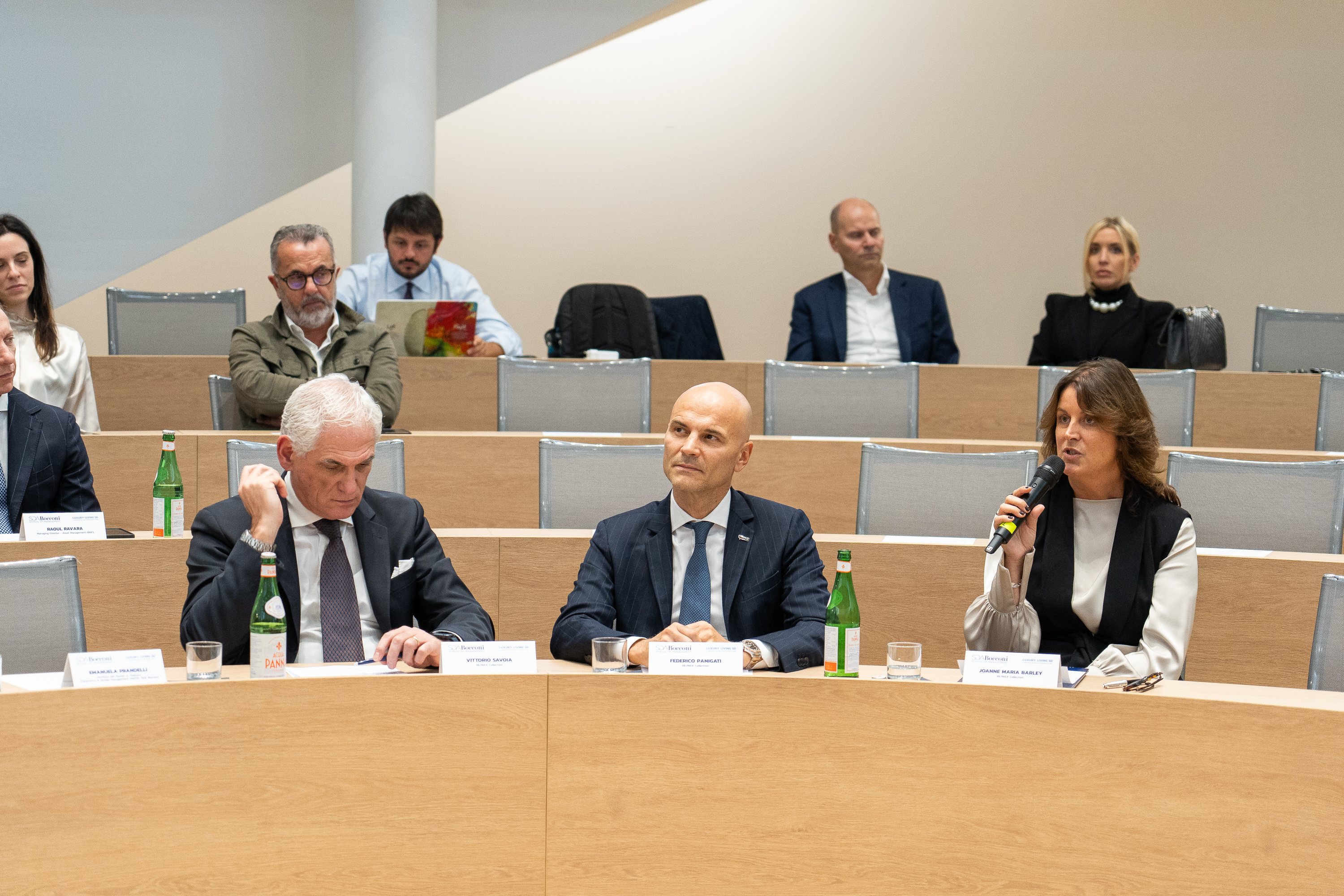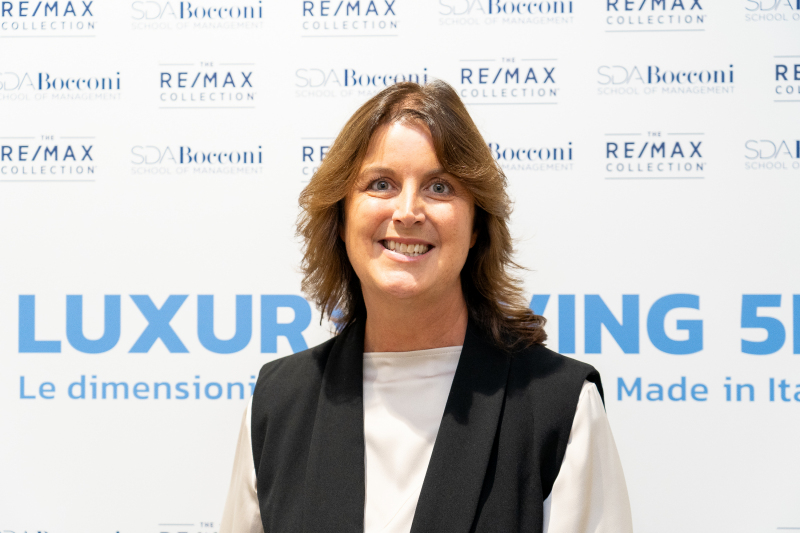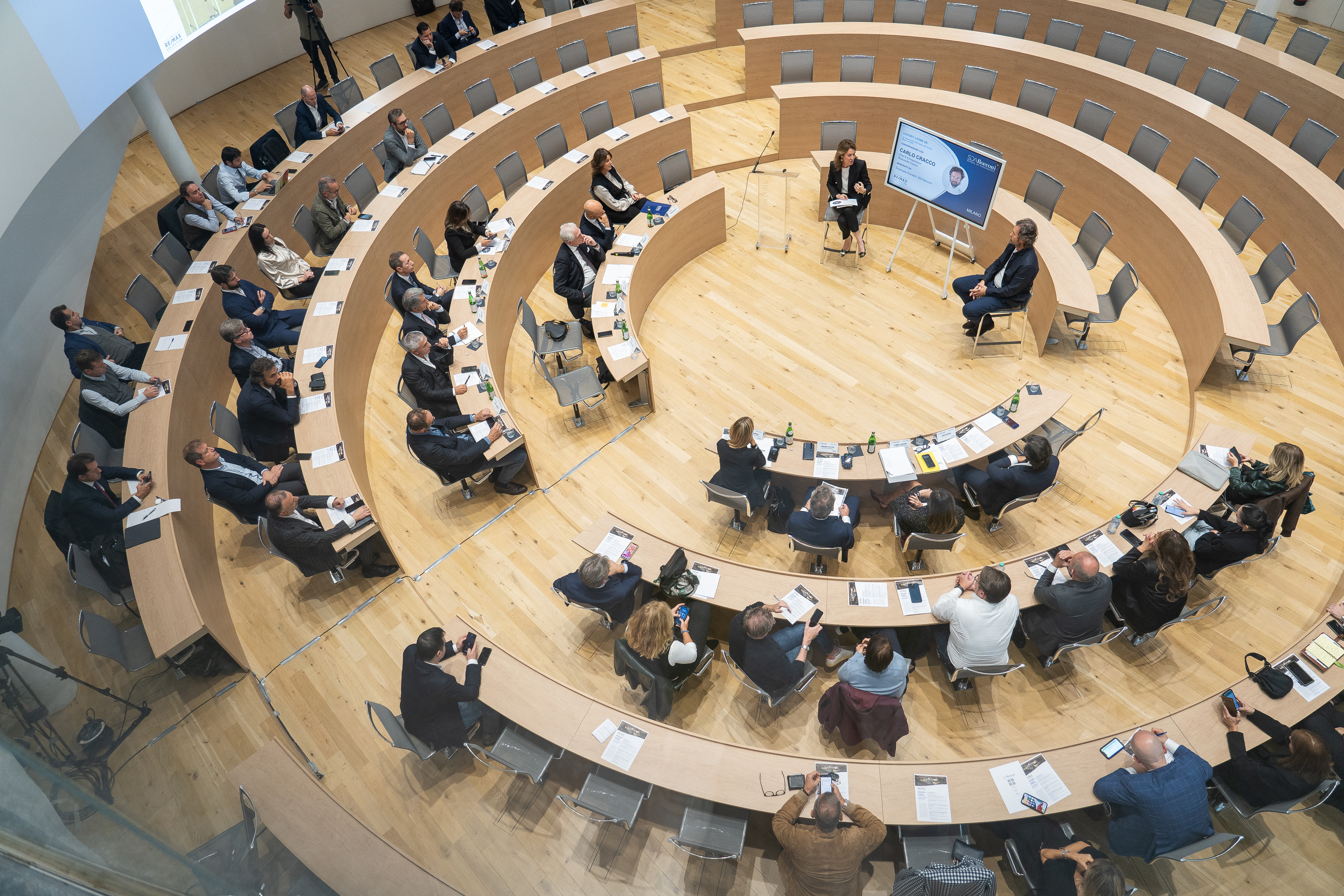From Sustainability to Innovation: An in-depth analysis of the meaning of luxury and its intersections in the contemporary Italian context.
“In our rapidly changing society, luxury represents a mirror of our desires, values and identity. It is a sector that reflects taste, beauty and innovation. But, more and more, also social and environmental responsibility.” it is with these words that Dario Castiglia President and Founder of RE/MAX Italia kicked off the Luxury Living 5D – The Dimensions of Luxury in Living Made in Italy initiative carried out by SDA Bocconi in partnership with The RE/MAX Collection the division dedicated to the luxury segment.
“Multidisciplinary and multi-sectoral skills with the ability to create innovation thanks also to the sharing of best practices among different sectors with the constant attention to sustainability are among the distinctive features of SDA Bocconi. The focus on sustainability is also evidenced by the new LEED Platinum-certified Campus, completed in the context of an urban regeneration benefiting not only students and faculty but the entire community, said Stefano Caselli, Dean SDA Bocconi as part of the institutional greetings.
The objective of “Luxury Living 5D” was to explore the dimensions of luxury and the interrelationships with the luxury living supply chain in the domestic market with the involvement of experts and top practitioners of luxury management from different industries. Specifically, the project included the contribution of SDABocconi professors and top practitioners from companies representing national and international Made in Italy excellence who shared what they found in the scientific literature and best practices from different sectors and/or disciplines investigating #5 dimensions.
Dimension 1 – Luxury Home-Office Value: the sustainable value of investments beyond the economic value in luxury: the dialogue between Leonardo Luca Etro, Associate Professor of Practice of Corporate Finance and M&A, and Giuseppe Abatista, Group Tax Consultant Salvatore Ferragamo and the conclusions of Joanne Maria Barley, RE/MAX Collection, highlights how the luxury experience is first and foremost a distinctive element with a deeply symbolic meaning, which identifies a way of being and belonging to a core of values in order to enhance the peculiarities of those who live that experience.
Dimension 2 – Emotional Real Asset: lowest common denominator of luxury and the role of luxury real estate: Gabriella Lojacono Director Executive Master in Luxury Management- EMILUX in conversation with Matteo Marzotto, Head of Real Estate EMEA Essilor Luxottica and with the conclusions of Federico Panigati, RE/MAX Collection identified exclusivity, desirability and “aspirationality” as pillars of emotional real asset.
Dimension 3 – Luxury Real Estate as a service: the value of services in the life cycle of the luxury product and the role of real estate in the luxury customer journey: Manuela Prandelli Director of the Master in Fashion, Experience & Design Management – MAFED in conversation with Carlo Cracco, Chef & Entrepreneur Ristorante Cracco, discussed the topic customer experience: the value of authenticity in the era of omnichannelity. Technology plays key roles in the modern business models of luxury companies. First, it supports the analysis of consumer demand and behavior by providing the ability to personalize service and product.
Dimension 4 – RE-Lux-Tech: The Role of Technology in Luxury and Relationships with Living: protagonists of the fourth dimension dedicated to the role of technology in luxury are Paola Cillo Associate Dean for Resarch – Claudio Demattè Research in conversation with Raoul Ravara, Managing Director – Asset Management HINES and with the final comment of Vittorio Savoia, RE/MAX Collection. “Luxury should not be interpreted as a matter of status but as a form of expression of identity and belonging to a community of people,” said Cillo.
Dimension 5 – Real Asset Investment, the value drivers of luxury assets and the role of luxury and real estate in portfolio diversification: the discussion of the fifth dimension featured Andrea Beltratti, Academic Director Executive Master in Finance – EMF of SDA Bocconi, and Giuliano Giannessi, CFO Dolce & Gabbana, who discussed the distinctive features in diversified luxury and passion asset portfolios. The talk emphasized how the link between luxury and experience has long been rooted in assets that are precisely defined as “passion assets” i.e., financial and real assets linked precisely to the process by which certain goods and services are valued in a particular way by the consumer community.
The “take home” emerged from Alessia Bezzecchi’s interview Associate Professor of Practice Corporate Finance & Real Estate SDA Bocconi School of Management and creator of the Luxury Living 5 D project with Dario Castiglia, who highlighted how “the mission in luxury living is to offer an experience that transcends mere economic-financial value, providing a high-quality service that puts people’s well-being at the center, both socially and environmentally capable of promoting a sustainable lifestyle of great beauty.” Trends in the luxury living market, both internationally and domestically, can vary over time and are often influenced by various economic, social and cultural factors. Internationally, clear trends are evident such as:
– Sustainability: growing interest in luxury properties that incorporate elements of sustainability and eco-friendly practices, in homes that are energy efficient and made from environmentally friendly materials,
– Integrated Technology: luxury homes are increasingly integrating advanced technologies, such as advanced security systems, home automation, entertainment systems, and high-end connectivity,
– Exclusive Locations: continued interest in luxury properties in exclusive and coveted destinations, which may include coastal residences, mountain villas, or properties in prestigious metropolitan areas,
– Privacy and Security: aspects so relevant to luxury buyers that properties often include advanced security systems and fences or other protective measures.
In Italy, distinctive trends include:
– Rural Lifestyles: growing attraction to luxury properties located in the countryside, such as villas and estates, which can offer a rural lifestyle but with all the comforts of luxury,
– Art Cities: Italian art cities, such as Florence, Venice, and Rome, continue to attract luxury buyers due to their rich history, culture, and architectural beauty,
– Historical Heritage: properties with rich historical heritage, such as castles or historic villas, are highly sought after in the Italian luxury market,
– Cuisine and Lifestyle: Italy is renowned for its cuisine and lifestyle. Luxury properties often include gourmet kitchens and wine tasting spaces.
– Access to the Sea and Mountains: luxury properties near the sea or mountains continue to be popular, offering the opportunity to make the most of Italy’s natural landscape.
In addition to the elements of sustainability, technology, and privacy and security, distinctive features of luxury living include:
– Exceptional Design and Architecture: luxury buyers seek properties with extraordinary design and architecture, high-quality materials, fine finishes, and exceptional aesthetics,
– Personalized Services: personalized services, such as service staff, private chefs, concierge, and full-service assistance, are often included in luxury properties,
– Prestigious Location: location is essential. Luxury properties should be located in prestigious areas, such as exclusive neighborhoods or near major attractions
In a nutshell, luxury is no longer synonymous with excess, but with sustainability. Concern for the planet and the global community has become a key component of what we consider luxury. This is why luxury brands are committed not only to satisfying the desires of their customers, but also to doing so in a way that is ethical, sustainable, and therefore “nicer” beyond revenues and costs.
 English
English Italiano
Italiano



